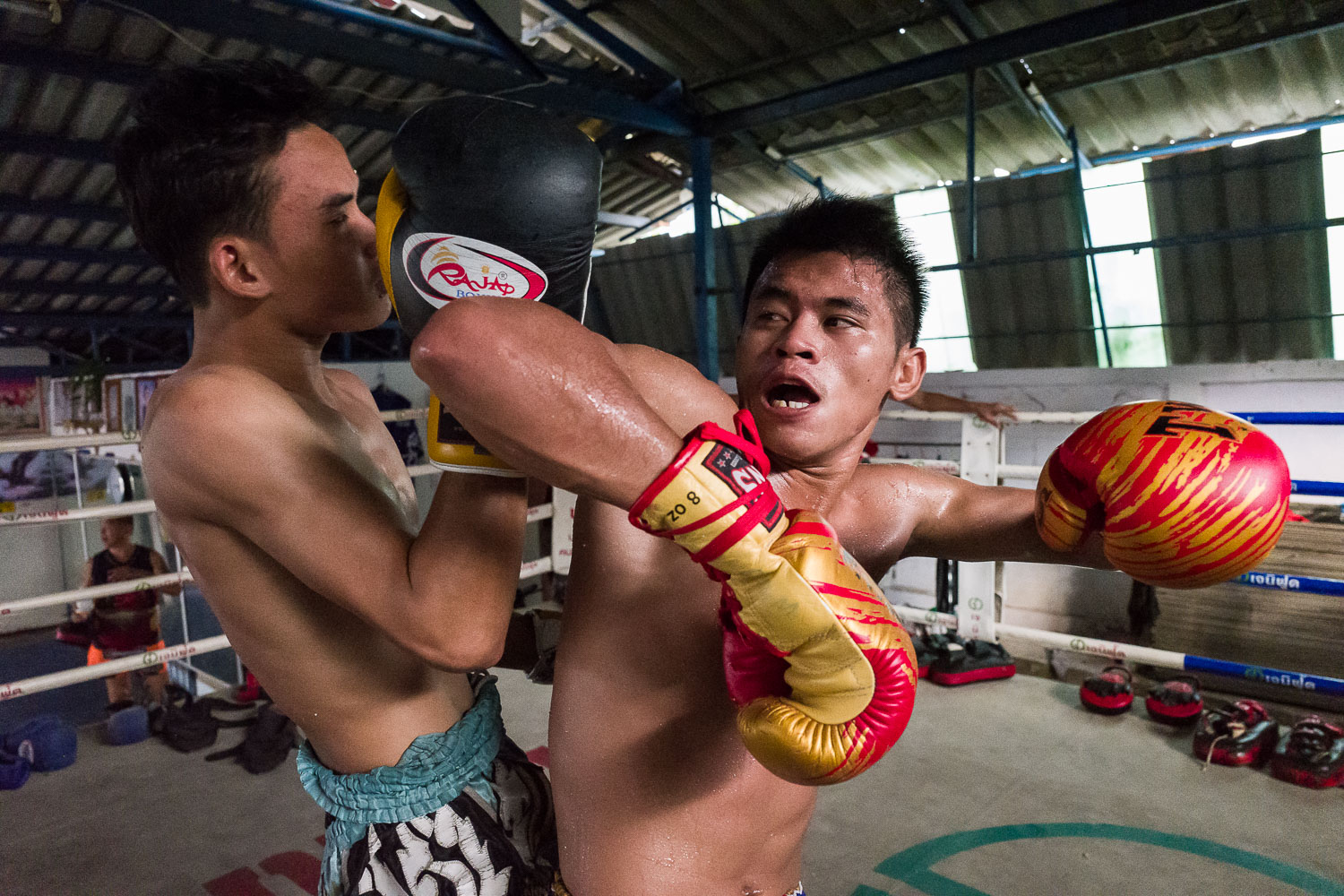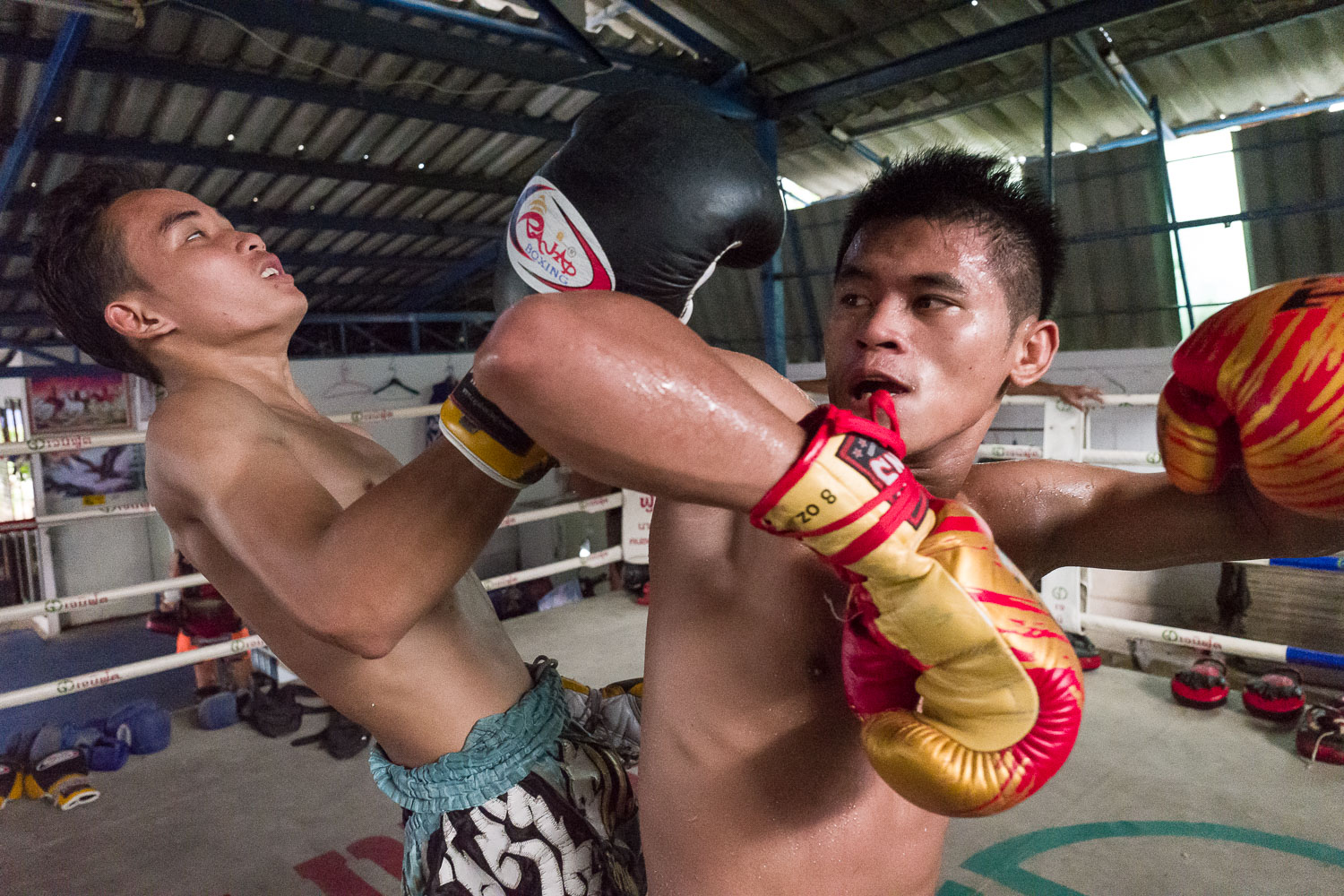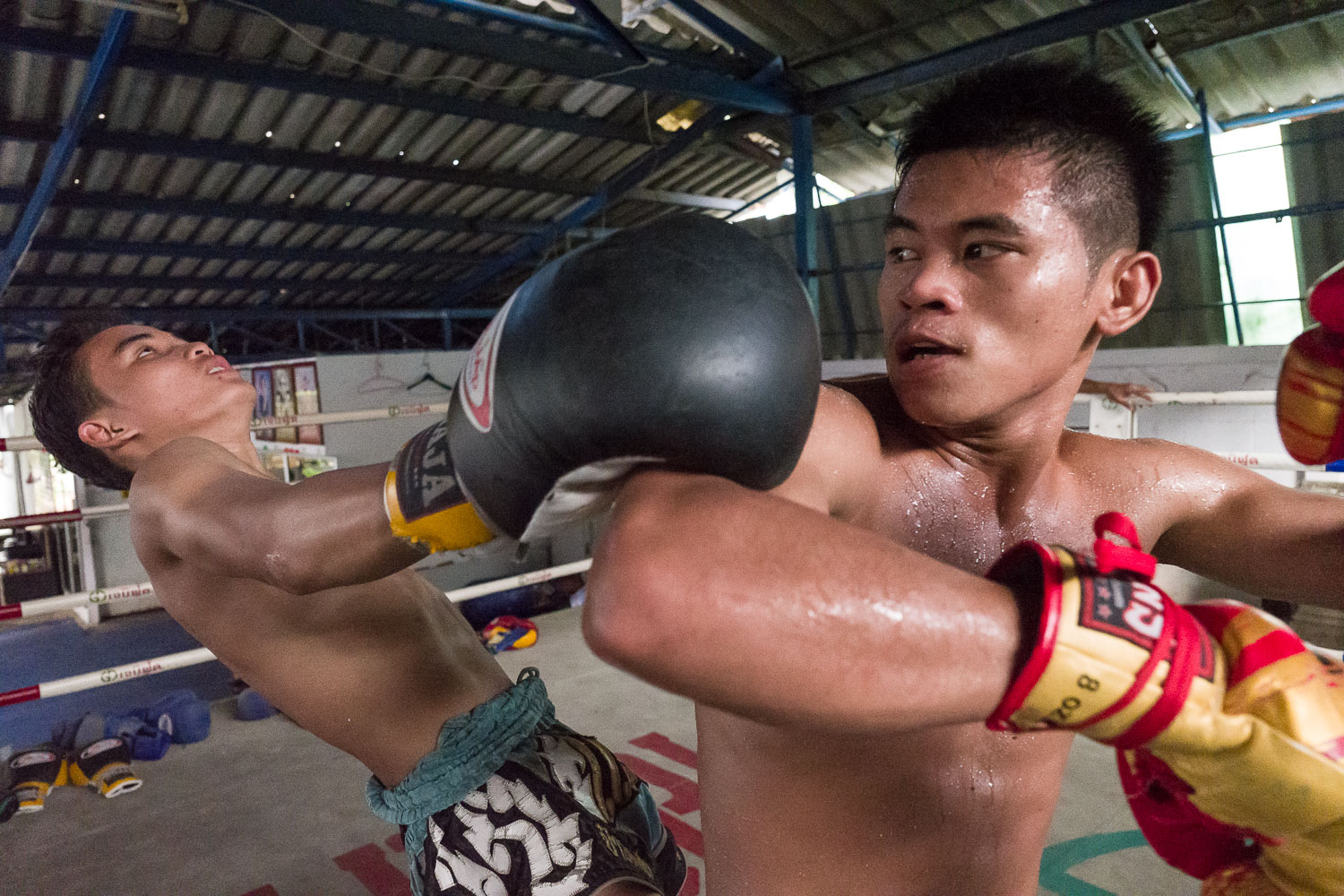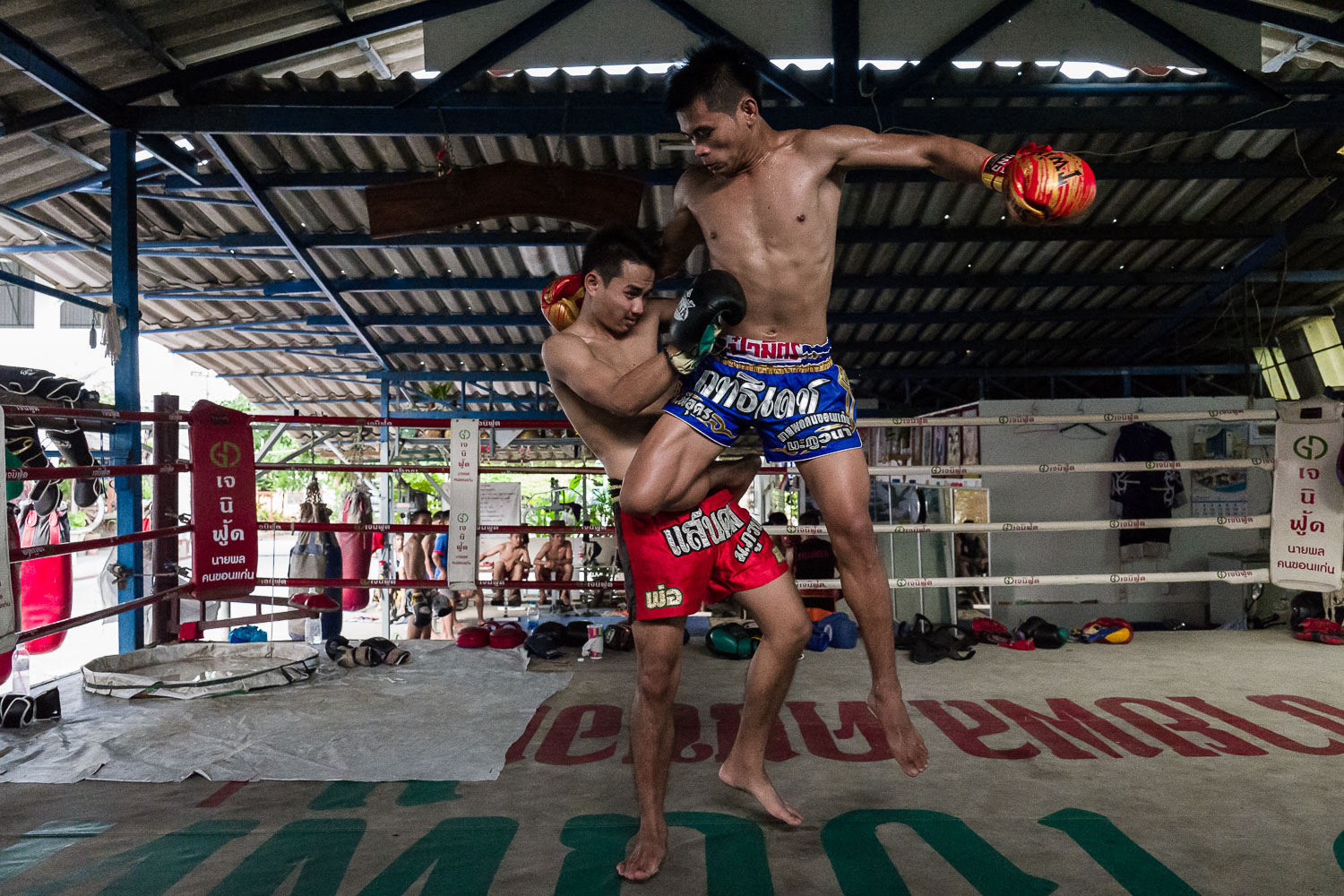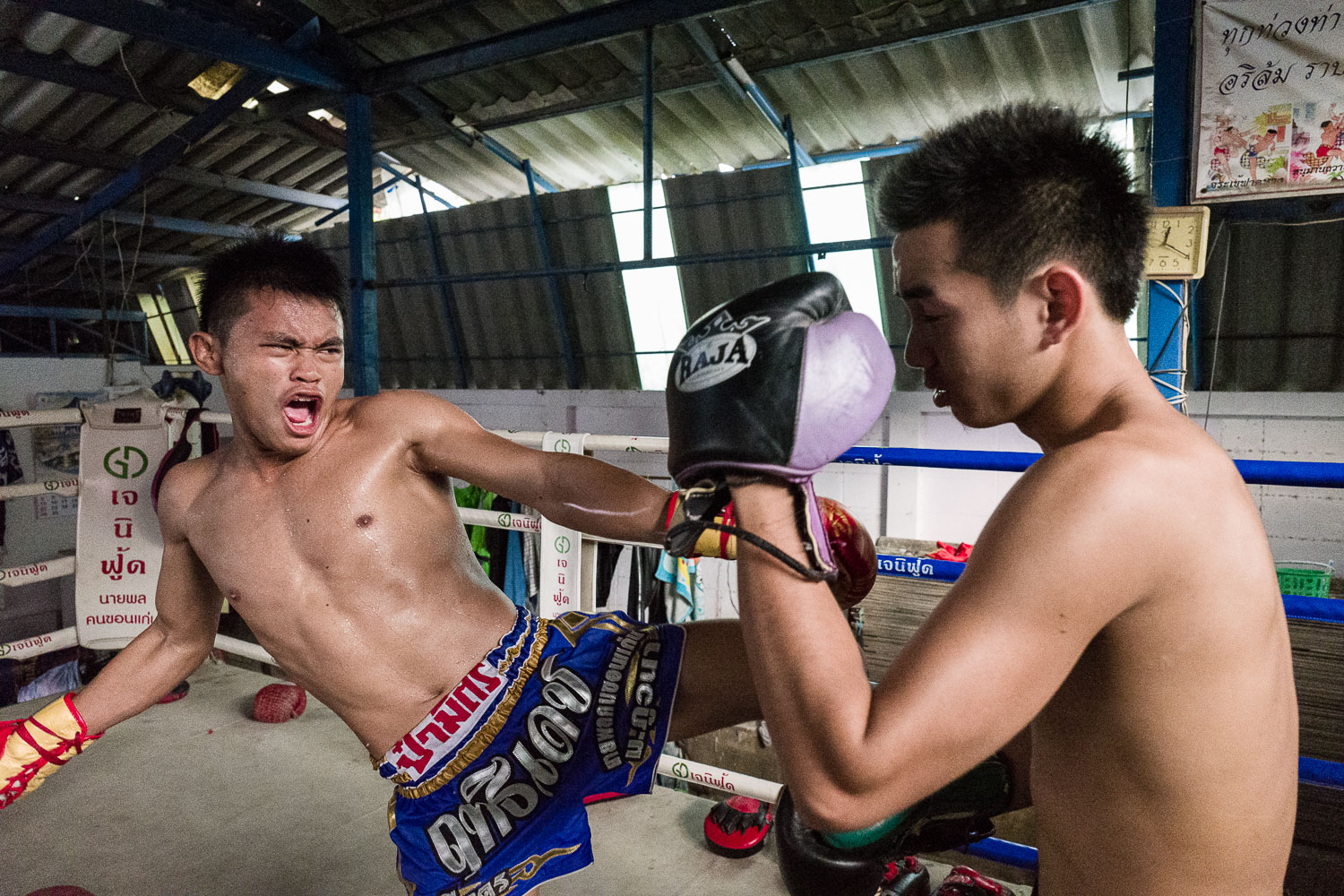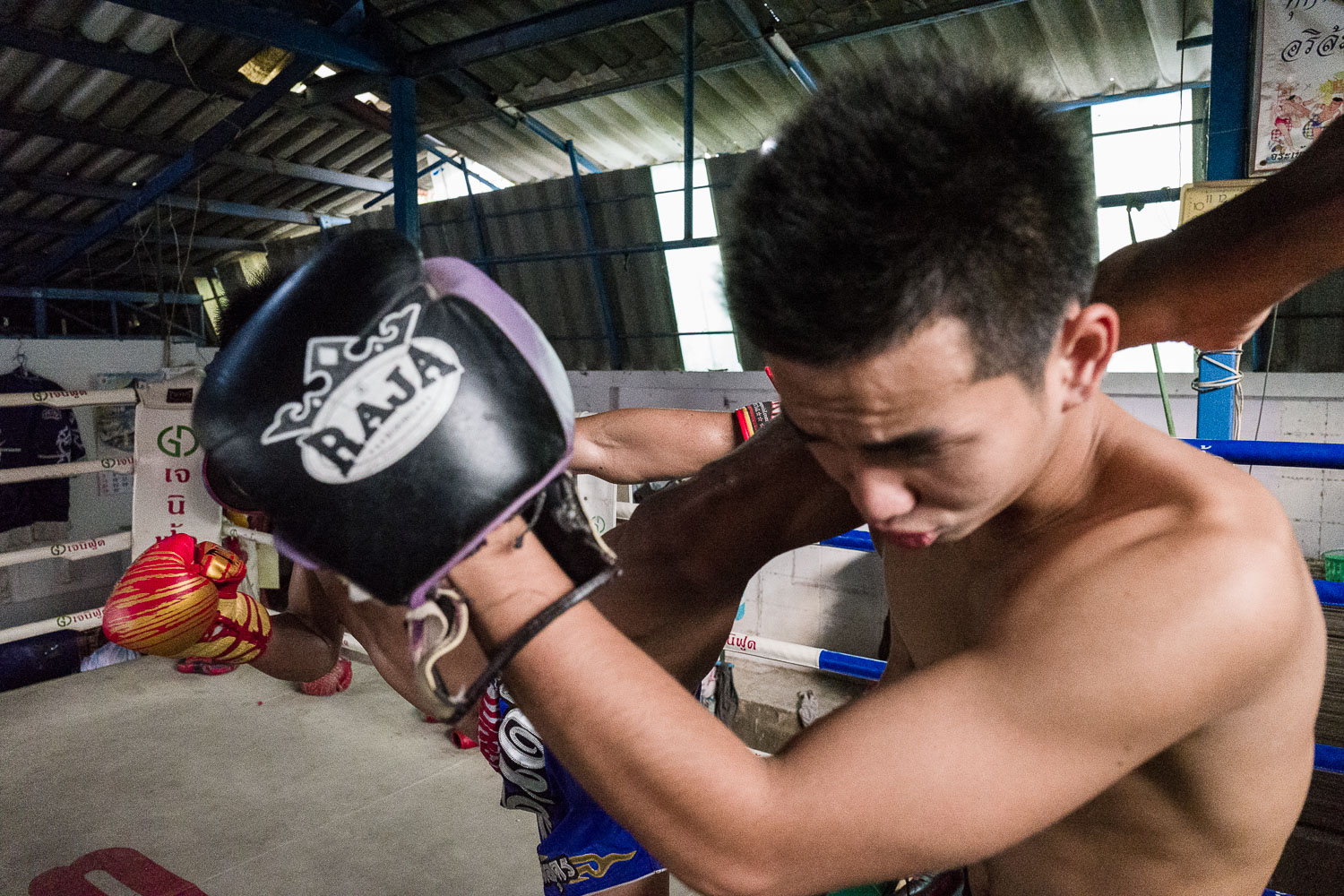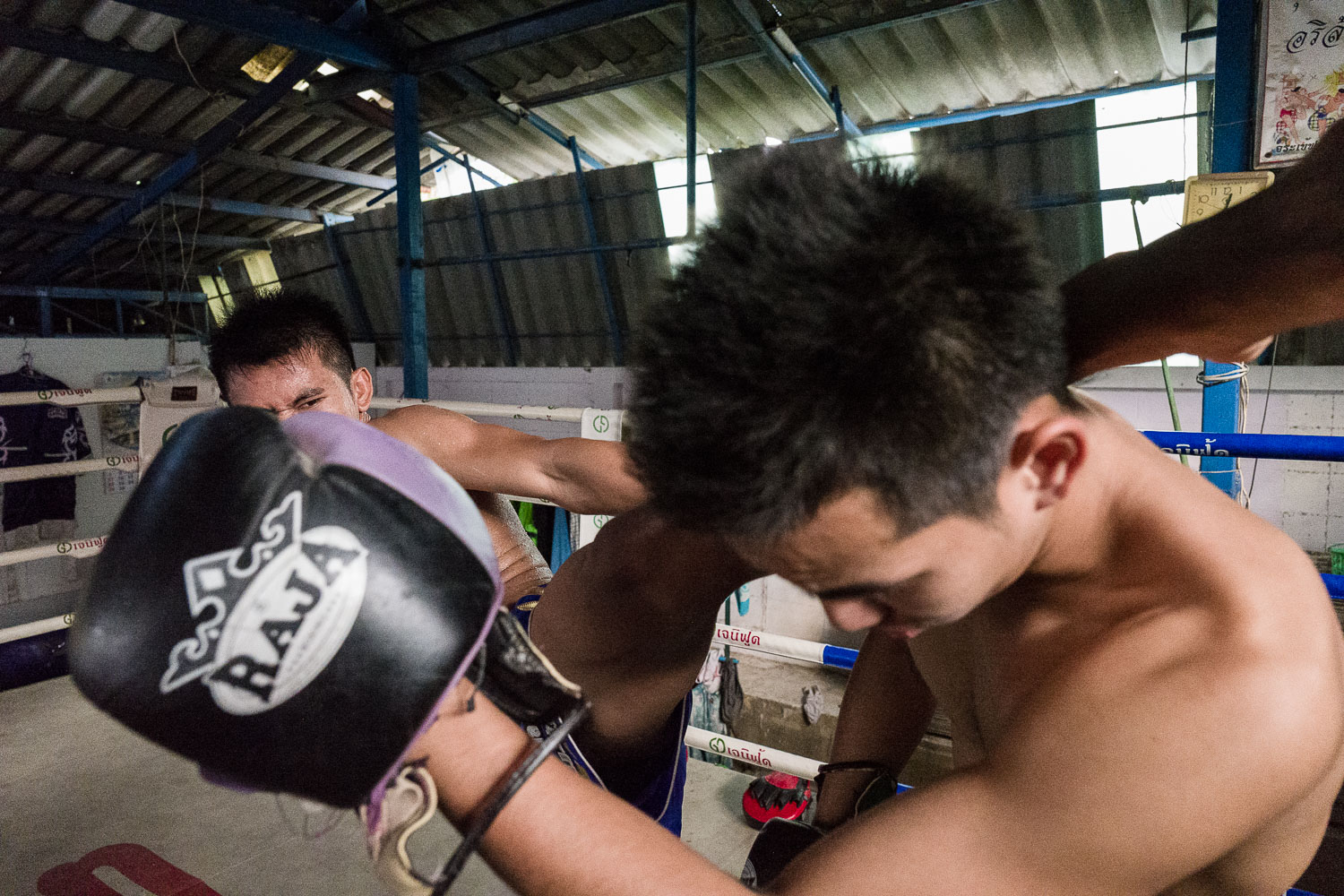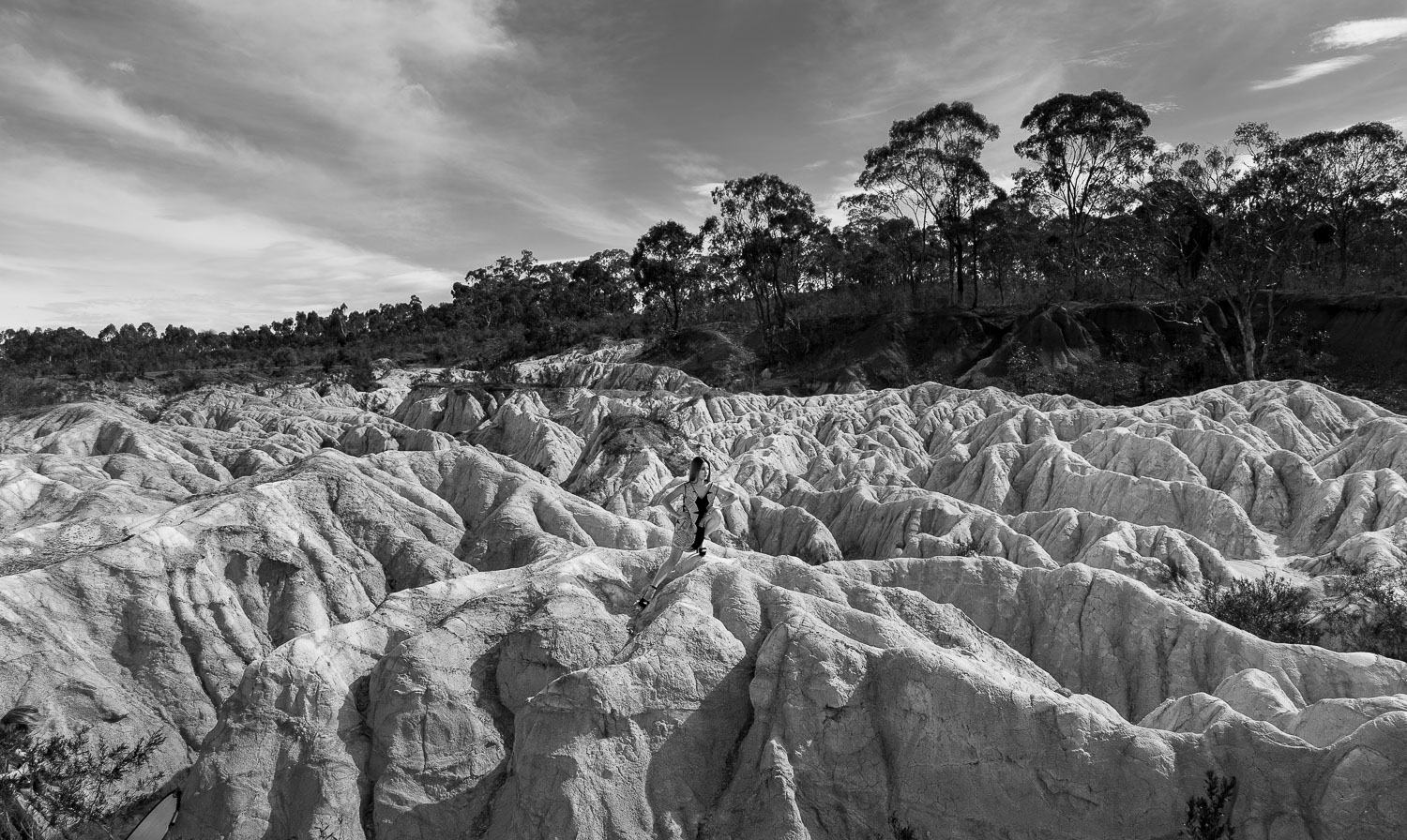


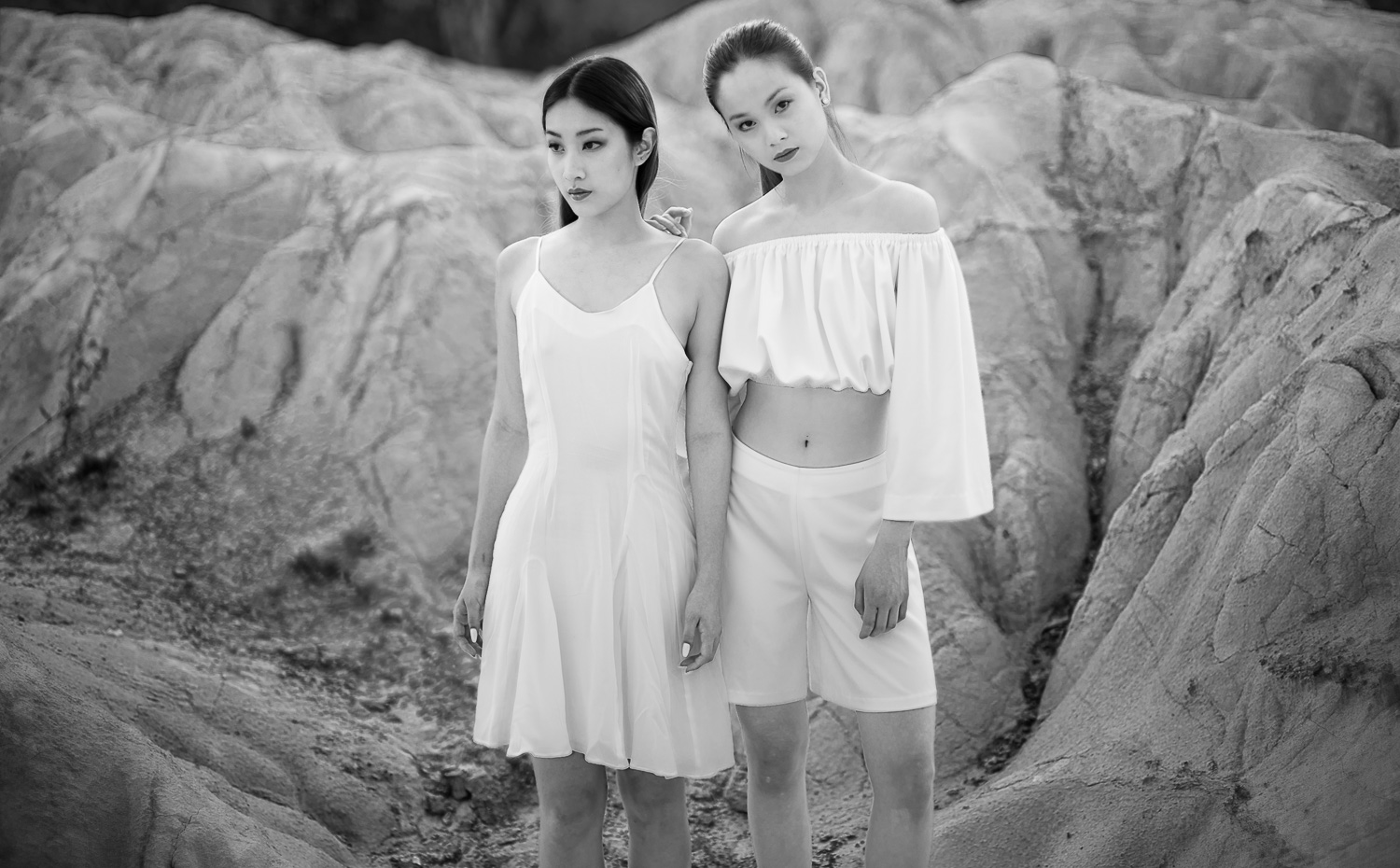
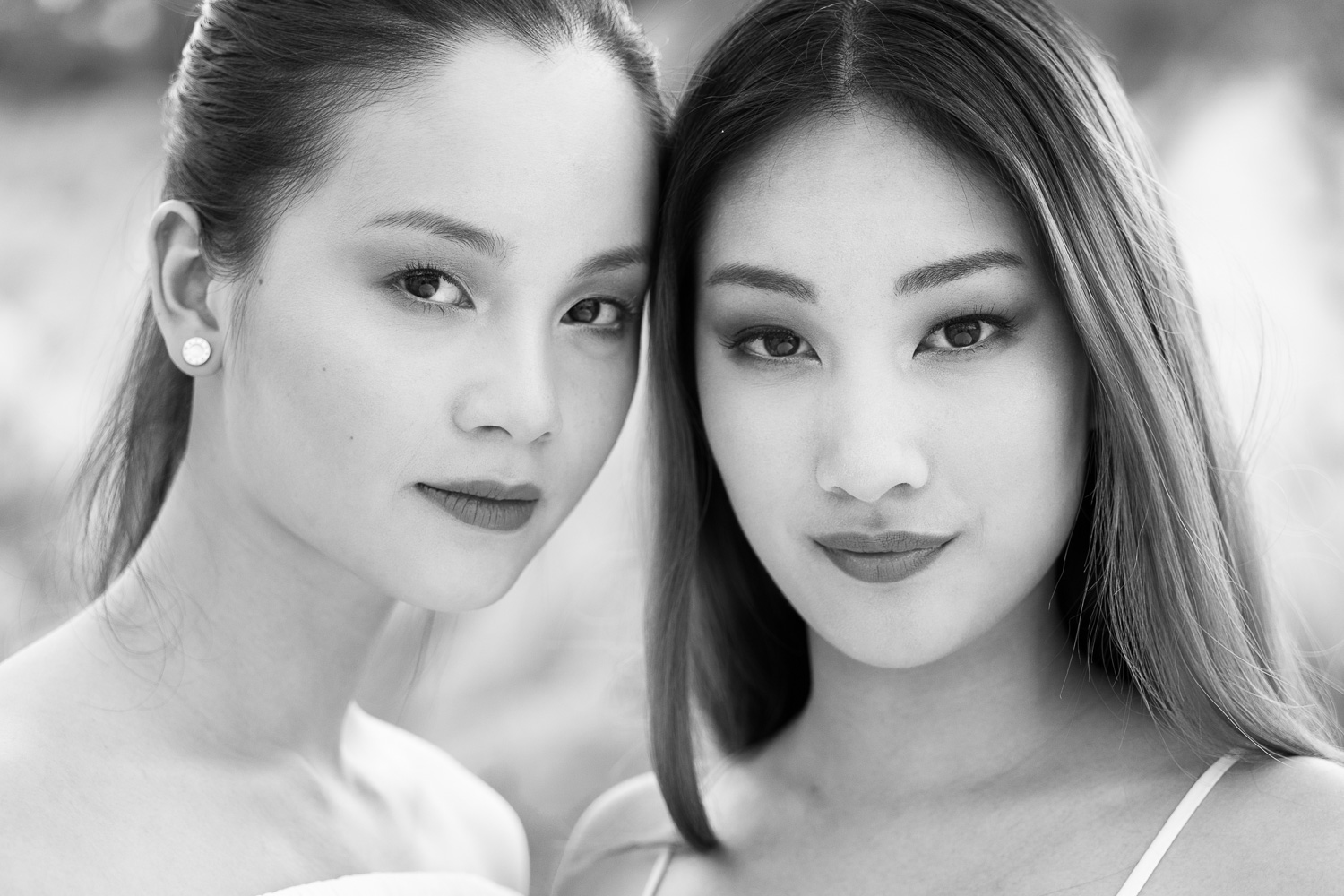
Notes: I have been fortunate to be chosen by Leica to use the Leica SL for the last month, and while the firmware is production version 1.1, it is also pre-release, so there may be changes made by the time you get your hands on the camera. All images were shot in manual exposure mode, and very little has been changed when editing in Lightroom, with no sharpening added to the images.
The above video (and stills) was shot entirely on the Leica SL using 1080p at 120fps.
Credit: Kristian Dowling 2015
So by now some of you may have been fortunate enough to secure your very own Leica SL since the November 16 retail release, and I bet there are some excited people out there wondering how well this camera performs – more so over time, and not in an 'extensive' five-minute test. The initial reaction from the market was both positive and maybe a little overwhelming, with many expecting a more compact amateur-based camera. The specs indicate otherwise - a professional mirrorless camera, and that is exactly what the SL is. In fact it is the world’s very first professional mirrorless camera/system. It’s unlike anything we have previously seen, filling the gap left from the R-series, and it’s taken the market by surprise.
Continuing on from my initial intro review to the SL, I’ve now had the last month to shoot with the SL on several assignments in a variety of differing conditions, truly putting the camera to the test. Most importantly, I’ve been personally interested to see if this camera could replace my Pro SLR to be my main ‘go-to’, ‘do-anything’ camera. To pass this test it needs to meet and hopefully exceed my following criteria and expectations:
High speed autofocus that is not only fast but accurate in any kind of light, especially low light
Robust build that instils confidence with a firm grip/feel, and adequate water resistance.
High frame rate at full resolution.
Accurate and consistent white balance.
Accurate skin tones and colours.
Superior sharpness of the standard zoom lens.
Easy and efficient access to controls and most used functions.
Fast processing and little to no slow downs/lockups.
Superior image quality to anything I’ve used up to ISO 12,500.
Leica SL with Vario-Elmarit at 55mm | ISO 400 at f/4 for 1/400sec | London
Leica SL with Vario-Elmarit at 24mm | ISO 50 at f/3 for 1/125sec | Leica Store, Mayfair in London
Leica SL with Vario-Elmarit at 53mm | ISO 800 at f/5.6 for 1/800sec | London
ERGONOMICS AND FUNCTIONALITY
In a market filled with many great camera options, there is a lot to consider before making your choice, especially in the prosumer/professional market segment. While image quality is paramount to professionals, we are often looking very closely at how the camera operates, especially in regards to accessing controls, switching modes, functions and activating key features. The camera needs to be an extension of our creative intent, and a translator of what we see before us. Those who are familiar with SLR cameras, specifically the pro models will be accustomed to operating them by using a combination of labelled buttons and dials all over the camera.
The Leica SL is an obvious departure from this design philosophy and will feel somewhat foreign upon first use. The German manufacturer has chosen to keep things minimalistic and in doing so, has forgone the need to label all buttons, trusting the photographer to customise the camera to their liking and operational needs. Once setup, the SL becomes an efficient camera, where controls feel seamless with the design, and most importantly, all modes, functions and key features can be accessed quickly and effectively, often with no menu-diving required.
Controls and Customisation
Customising the SL to your needs is imperative to ensuring efficient use in the field. Each of the ‘four menu control buttons’ can also act as function buttons with a ‘long press’. The front ‘stop-down’ button can also turn into a function button in the same way. Choosing the right ‘most-used’ function for each button will eliminate the need to dive into the menu to access those key functions, so think carefully before choosing. Over time, you may feel the need to change these around, and luckily there are multiple profiles you can setup to use your camera in different ways, depending on the situation, just by changing your saved profile.
The Touch Screen
There are several ways to interact with the SL, but the most fun and intuitive way is by using the touch screen during playback. All the touch screen gestures you’re used to when using your smartphone apply here, making for a very comfortable user-experience. With firmware 1.1, the screen operates smoothly for swiping and double-tapping, but there are still some improvements that could be made with pinch-to-zoom and moving around a zoomed-in image. Considering the vast improvements made recently to the Leica T in Firmware 1.4, I see this being rectified in no-time.
Here is a hands-on video to give you an idea of how the camera operates.
AUTO FOCUS
Before the Leica SL was announced I was fortunate to be given some inside information that hinted that the new SL would have professional grade speeds that would rival the best SLR’s on the market. Of course I was somewhat sceptical as this would be new territory for Leica, and I rely on fast and accurate autofocus for a majority of the work I do. Rest assured, the SL is fast, and boy has it delivered on it’s promise for fast auto focus. The AF also works well with the new ‘Eye-Res’ Electronic Viewfinder, and before I get into the various AF options, I’d like to emphasise just how incredible the new 0.8X magnification EVF really is. Its 4.4 million pixel technology, combined with a 60fps refresh rate make it unbelievable to use in any situation. Even in low-light, seeing the scene is bright and clear with amazing clarity, easily beating Pro SLR’s as it’s clarity is not dependent on the lens being used as it automatically ‘gains up’. Combined with ‘Exposure View’ (ability to view exposure before shutter release), it’s hard to go back to using an optical SLR viewfinder, especially for those who take (manual) exposure seriously.
Focus Options
Focus Modes
AF-S – focus priority
This mode is best used for focusing static subjects and in situations where you are confident there will be no need for focus tracking. Focus will override the shutter in this mode to ensure focus is 100% before the shutter can be released. Using AF-S mode I found focus to be super fast - easily, as fast, if not faster than anything I have previously used. Most importantly, focus is accurate, especially in ‘1-point’ mode where I could effortlessly pin-point focus exactly where I wanted it.
AF-C– shutter priority
This mode is designed purely for moving subjects where the auto focus will automatically adjust as the subject changes distance, ensuring sharp photos through continuous movements. Shutter is prioritised in this mode and will fire when the shutter is pressed regardless of whether focus has been fully achieved. Using AF-C I found it to be very good for slow to medium paced subjects, but when subjects picked up speed, accuracy did drop. Considering the vast AF improvements we have recently seen in the Leica T’s 1.4 firmware which doubled the AF speed, I would expect Leica to improve on this in future firmware updates. Also, keep in mind this is Leica’s first attempt at high speed AF in a professional camera so it’s already doing well in AF-S, but I’d like to see it continue to be improved on with AF-C.
Manual Focus
In manual focus mode, AF is deactivated from the shutter release button, but ‘can’ be initiated via the 5-way controller if the controller is set to AF in the custom menu. There are two key features important to using manual focus effectively, which have also come from previous Leica cameras – 'focus peaking' and 'focus assist'. Focus peaking works very well and you can choose from 4 colours (red/green/blue/white) that highlight the edges of where the camera 'thinks' the focus point is. Like built-in exposure meters, focus peaking should only be used as a guide, and more so used with wider lenses where focus is not that critical.
When using 50mm+ lenses, I would recommend using the focus assist feature, where you press the bottom left function button next to the LCD to zoom into 100%, and another press to 200%. Focusing at 200% can increase your hit rate tremendously and is much more accurate than relying on the focus peaking option, especially where focus needs to be spot on a specific target with narrow depth of field.
AF Field Size – options
1 point
This is by far my favourite AF mode, simply because the AF point is accurate and can be placed in 49 points, anywhere within the frame, even out on the very edges and focus with the same precision as it would in the centre, even in low light. The only concern I have with this is that the focus point is very small and sometimes can be hard to see as it is white before achieving focus (and green when focus is achieved). Fortunately, if you’re not relying on auto-exposure, putting the camera into spot-metering mode places a circle around the cross-hair focus point, making it much easier to see.
Field
Field mode represents what many SLR users would be accustomed to. There is a field of up to 42 points, coving about 80% of the frame. I found this mode to work very well with continuous focusing or dynamic focusing mode.
Zone
This is similar to field focusing except now you can move a group of 9 focusing points together around the area of 42. This option is best used for a larger subject moving at a further distance to camera, such as a full length shot where focus doesn’t need to be specific on a point, like a face.
Touch AF
While the touch screen allows you to interact with your images in playback mode, it can also be used to place the focus point exactly where you want it, and to achieve focus, just by touching the screen. Upon touch, it will focus immediately. While it’s not always going to be the most suitable focus option, its handy to quickly place you focus point here you like it, as its faster than moving the focus point using the 5-way joystick.
Static/Dynamic modes
Dynamic mode will track focus automatically regardless of the selected AF-S or AF-C mode. The focus points are white, and turn green on achieving focus and red when it cannot find focus.
AF Assist Lamp
Often found on compact cameras and professional flash units, the AF Assist feature sends an infra-red beam towards the focus point from 1-3m. This feature can be very important when focusing in little to no light. The AF Assist lamp can also be turned off where the red beam may not be appropriate.
THE LENS - VARIO-ELMARIT-SL 24-90mm f/2.8-4 ASPH
Leica SL with Vario-Elmarit at 90mm | ISO 200 at f/4 for 1/250sec | Chiang Mai, Thailand
Let me make something very clear. This Vario-Elmarit is what truly makes the SL very special, and really makes the camera feel complete. Not only does it have optical image stabilisation built-in, but is has a very respectable variable aperture from f/2.8 at 24mm to f/4 at 90mm, and the focal range itself takes you from wide angle to head-shot, which is perfect as a multi-purpose lens from everything from landscapes, to travel, to documentary and to portraiture. Most competitor lenses have a fixed maximum aperture of f/2.8, but they only go from 24mm-70mm and I'll say it loud a clear - they don't even compare to the resolution of this lens.
Most importantly, it is built of the DNA design of the S-Series lenses and come with the quality you’d expect from a medium format lens, with less design compromises, which does explain a little about it's size. Coming from the same designers as the S-Series, the SL lenses are designed and manufactured to the same standards as the S with the same high-resolution goals. While the M-Series should be commended for the amazing quality in such compact designs, the new Vario-Elmarit deserves equal praise for its performance all the way through it’s focal and aperture range.
Crop with sharpening set to 0 in Lghtroom
Leica SL with Vario-Elmarit at 90mm | ISO 400 at f/4 for 1/320sec | Chiang Mai, Thailand
Crop with sharpening set to 0 in Lghtroom
Leica SL with Vario-Elmarit at 90mm | ISO 50 at f/4 for 1/250sec | Chiang Mai, Thailand
On my way back from Germany and London I stopped off in Thailand to do a couple of quick shoots in Chiang Mai and Bangkok, and it was a great first experience using the SL. Since then, I haven’t encountered any issues in regards to chromatic aberrations, fringing, flare or colour issues. In fact, the output from this lens is so good it has to be the best 35mm format zoom lens I’ve ever used - period. That’s a big call I know, but it’s true. From the MTF graphs you can see just how well the lens performs at infinity, but I did find that it performs even better in the close range. So whatever you’re looking at in the MTF, add a few extra points on for close range use.
For the last month I have used the lens almost exclusively on the SL without a (82mm) protective filter and most of the time with the supplied lens hood which does a great job at both protecting the front lens element as well as maintaining contrast and reducing any effects of flare. The Aqua-Dura coating on the lens does a fantastic job at reducing dust and dirt build up, and as you can see from the video above, water brushes off the surface with ease.
The lens does extend when zoomed towards 90mm, so you can appreciate just how hard the designers worked to ensure the lens is sealed from dust and moisture. Even after rinsing off the lens with a water bottle, it functions perfectly.
Leica SL with Vario-Elmarit at 34mm | ISO 3200 at f/3.2 for 1/320sec | Bangkok, Thailand
Leica SL with Vario-Elmarit at 31mm | ISO 6400 at f/3.0 for 1/200sec | Bangkok, Thailand
Leica SL with Vario-Elmarit at 90mm | ISO 1600 at f/4 for 1/200sec | Bangkok, Thailand
Crop with Sharpening set to 0 in Lightroom
Leica SL with Vario-Elmarit at 35mm | ISO 3200 at f/3.1 for 1/80sec | Bangkok, Thailand
Leica SL with Vario-Elmarit at 49mm | ISO 3200 at f/5.0 for 1/250sec | Bangkok, Thailand
Leica SL with Vario-Elmarit at 27mm | ISO 12500 at f/2.9 for 1/200sec | Bangkok, Thailand
IMAGE/FILE QUALITY
MirrorLESS
Before I delve into the nitty-gritty of the files, I’d like to touch on the benefits of using a professional mirrorless system and how that affects image quality. Firstly, the light coming through the lens hits the sensor directly, without a mirror, which allows for the use of the EVF. Using the EVF means you get to see more information in the viewfinder (if needed), and you also see the true effects of your exposure before the shutter is activated. On top of that the EVF and LCD are almost identical to the colours I get on my Eizo Monitor, and close to my Apple Macbook Pro, which makes in-field colour/exposure monitoring trustworthy and very accurate.
The lack of mirror means less vibration as well, resulting in (potentially) sharper images in low light as well as reduced sound when the shutter is fired. Also by removing the complicated mechanisms of an SLR there is less than can go wrong. Lastly, due to the shorter flange-to-film distance, many different lenses can be mounted to the SL with no loss of image quality, using the official Leica adapters of course.
Singer Leo Sayer | Leica SL with Vario-Elmarit at 70mm | ISO 400 at f4.5 for 1/640sec | Sydney
The Sensor/Processor
I won’t go into the sensor specs as you’re probably well aware of them already, but I must say that the 24MP CMOS sensor in the SL is flat-out awesome. Its a modified version of the one in the popular Leica Q and it works so well with the incredible Vario-Elmarit-SL 24-90mm f/2.8-4 ASPH Lens. The Maestro II processor has been taken from the Leica S-System and does a very good job of keeping up with the recording of still and moving images. Only a handful of times did I have issues with recording. The only slowdown that occurred was the inability to preview images while it was recording (DNG and JPEG) in high-speed, which was a little frustrating. Again, I have faith Leica will look to correct this in a future firmware update.
The Files
Files come in at around 44MB in DNG and 4MB in JPEG at the highest quality setting. In the current 1.1 firmware, you need to shoot both DNG and JPEG at the same time to be able to zoom in to check sharpness of your images in playback mode. This will be corrected in a future update.
Grain structure and ISO Performance
The grain of the SL files is very fine with virtually no artefacts. At low ISO, starting at a very respectable 50, the grain is superfine, resembling a similar look to what you’d find in a medium format camera. It’s not at the same level as the S (Typ 007) but it’s closer to that than it’s other 35mm format competitors. Combining the fantastic sensor with the incredible zoom lens, the SL makes for the most capable standard-zoom imaging kit on the market. In my opinion, no other zoom lens comes close in the 24-100mm segment. Even other cameras with high resolution fixed lenses would have a hard time keeping up with this lens, especially in the close range where it excels the most.
Leica SL with Vario-Elmarit at 90mm - closest focus distance | ISO 12500 at f/6.3 for 1/2000sec | Melbourne, Australia
Crop with sharpening and noise reduction added
Leica SL with Vario-Elmarit at 90mm | ISO 3200 at f4.0 for 1/640sec | Melbourne, Australia
Crop with sharpening set to 0 in Lightroom
Singer Neil Diamond | Leica SL with Vario-Elmarit at 43mm | ISO 3200 at f4.5 for 1/100sec | Melbourne, Australia
Singer Neil Diamond | Leica SL with Vario-Elmarit at 90mm | ISO 3200 at f4.0 for 1/2000sec | Melbourne, Australia
Crop with sharpening set to 0 in Lightroom
The best part about the SL is that it applies no noise reduction in-camera, so every little bit of detail is retained, up to ISO 12,500. Everything is super clean to ISO 800, and as you move to ISO 1600, noise does start to show but still looks very clean and with a little noise reduction, files can look amazing at ISO 1600-3200. I would say that ISO 12,500 is the limit where colour, detail and grain structure can be fully maintained. At 25-50k, you do see a drop off in detail due to more significant noise and a little evidence of banding in some situations, and if you then clean it up in post-production, you will see a loss of detail, but I found that ISO 12,500 is enough for 99% of my needs, and I shoot in low-light very often for around 75% of my work. It's still nice to have the 25k and 50k ISO options there if you really need them as they are still very usable, just not ideal if avoidable.
Leica SL with Vario-Elmarit at 83mm | ISO 50 at f5.6 for 1/250sec | Leitz Park - Wetzlar, Germany
Crop with sharpening set to 0 in Lightoom
Colour
This is where I get really excited. The colour coming from the SL is the best I’ve seen from any 35mm system camera to date. Everything from skin tones to skies and landscapes come out with great accuracy and more importantly, consistency from the AWB sensor. It’s theoretically impossible for a white balance sensor to be accurate all the time, just like an exposure meter, but the SL gets pretty close to it, in many different lighting situations.
Like other recent Leica cameras, there is a slight lean towards the orange spectrum, so I reduce the orange-channel saturation a little, to get the skin tones exactly where I like them.
DJ David Guetta at Melbourne Cup 2015 | Leica SL with Vario-Elmarit at 32mm | ISO 1600 at f/7.1 for 1/250sec | Melbourne, Australia
Melbourne Cup 2015 | Leica SL with Vario-Elmarit at 35mm | ISO 50 at f/5.0 for 1/250sec | Melbourne, Australia
Melbourne Cup 2015 | Leica SL with Vario-Elmarit at 48mm | ISO 50 at f/5.6 for 1/800sec | Melbourne, Australia
Crop with sharpening set to 0 in Lightroom
Melbourne Cup 2015 | Leica SL with Vario-Elmarit at 70mm | ISO 50 at f/5.6 for 1/320sec | Melbourne, Australia
Melbourne Cup 2015 | Leica SL with Vario-Elmarit at 28mm | ISO 50 at f/5.6 for 1/400sec | Melbourne, Australia
Melbourne Cup 2015 | Leica SL with Vario-Elmarit at 62mm | ISO 50 at f/5.6 for 1/4000sec | Melbourne, Australia
Crop with sharpening set to 0 in Lightroom
Of course in mixed lighting, or pink/blue lighting for example, there is nothing that can be done to white balance correctly.
Recording Artist Craig David/TS5 at Bond | Leica SL with Vario-Elmarit at 24mm | ISO 12500 at f4 for 1/500sec | Melbourne, Australia
Crop with some noise reduction and sharpening added
Recording Artist Craig David/TS5 at Bond | Leica SL with Vario-Elmarit at 24mm | ISO 12500 at f4 for 1/500sec | Melbourne, Australia
Recording Artist Craig David/TS5 at Bond | Leica SL with Vario-Elmarit at 40mm | ISO 12500 at f3.8 for 1/50sec | Melbourne, Australia
THE NEED FOR SPEED
The Leica SL turns on in about 1 second before it is ready to be shot. While it’s not super-speed, its still more than adequate and hopefully can be improved on with future firmware updates. It’s one thing for Leica to launch a camera with great imaging qualities, but it’s another to set it’s ambitions on high-speed, especially at a resolution of 24MP. At 24MP (using a fast SD card), the SL can record up to 36 continuous DNG and JPEGS at the same time before the buffer need to reset. When recording JPEGS only, the SL can record continuously until your card runs out of space.
Leica SL with Vario-Elmarit at 32mm | ISO 50 at f/5.6 for 1/400sec | Bangkok, Thailand
Leica SL with Vario-Elmarit at 32mm | ISO 800 at f/4.0 for 1/8000sec | Bangkok, Thailand
Crop with sharpening set to 0 in Lightroom
Leica SL with Vario-Elmarit at 32mm | ISO 400 at f/5.6 for 1/800sec | Bangkok, Thailand
Leica SL with Vario-Elmarit at 32mm | ISO 50 at f/4.0 for 1/250sec | Bangkok, Thailand
Crop with sharpening set to 0 in Lightoom
During continuous focusing, the camera slows down to around 7ps, which is a little under the Pro competition, but again, keep in mind this is while recording DNG files at 24MP, compared to 16MP and 18MP. During my time with the SL, I’ve shot a few shoots requiring continuous focusing at high speed, and it did quite well. I shot some action sequences at a Muay Thai Kickboxing Orphanage outside Bangkok to see who well the AF can keep up during high speed, so was keen to try the different focusing options. For the most part, I would avoid using single point area as the focus area is too small for most things. Dynamic tracking I found to be a little slow to keep up with high-speed subjects, so I recommend using the field mode with continuous focusing activated in Static (non-dymanic) mode for the best results.
Leica SL with Vario-Elmarit at 24mm | ISO 12500 at f/4.0 for 1/640sec | Bangkok, Thailand
Crop with sharpening set to 0 in Lightoom
Leica SL with Vario-Elmarit at 24mm | ISO 12500 at f/4.0 for 1/640sec | Bangkok, Thailand
For the most part there are still some improvements I’d like to see with AF accuracy in these situations and Leica is well aware of it and will be implementing improvements in future firmware updates.
USING M LENSES
The SL will be able to be used with M lenses right from launch as the T-M adapter has been available since the launch of the Leica T. I’ve been using the Noctilux on the SL and it’s an outstanding combination. Not only does the lens balance well on the SL body but I’d bet that shooting fast lenses like the Noctilux will help increase the average hit rate anywhere from 70% to 95% - and yes the EVF ‘IS’ that good! By utilising focus peaking, and especially the focus assist function to check focus at 100/200%, focusing becomes a breeze. At a distance of around 2 meters you can zoom into a subject’s eye to accurately achieve perfect focus.
Melbourne Cup 2015 | Leica SL with Noctilux-M 50mm | ISO 50 at f/0.95 for 1/8000sec | Melbourne, Australia
Crop with sharpening set to 0 in Lightroom
Melbourne Cup 2015 | Leica SL with Noctilux-M 50mm | ISO 50 at f/0.95 for 1/8000sec | Melbourne, Australia
Ren Hang Fashion Shoot | Leica SL with Noctilux-M 50mm | ISO 50 at f/0.95 for 1/800sec | Victoria, Australia
The other huge benefit to using M lenses (and other Leica lenses) is that the original adapter recognises the lens being used, and compensates for lens aberrations, fringing, vignetting and other issues that can potentially occur with digital use. I specifically found that using the Noctliux on the SL to produce the best looking files I’ve ever seen with this lens. In broad daylight with a little cloud, I was shooting at ISO 50 with 1/8000sec at f/0.95, and there was only a little bit of blue fringing occurring. This is an amazing accomplishment, as normally you’d be seeing a lot of purple fringing against the bright background. The Noctilux is design for low light use and it’s a small compromise for daylight….that we no longer need to be concerned about on the SL.
Leica SL with Noctilux-M 50mm | ISO 50 at f/0.95 for 1/1600sec | Melbourne, Australia
Camera Electronic Launch | Leica SL with Noctilux-M 50mm | ISO 12500 at f/0.95 for 1/200sec | Perth, Australia
TO LEICA SL, FROM.......
Digital SLR
Digital SLR users will definitely feel a sense of comfort and excitement, with a little bit of a learning curve. The size and heft is a great combination. Having an electronic viewfinder is quite the shell-shock but once you’ve tried this one, there’s no looking back.
Mirorrless
Mirrorless users expect a slightly bigger but much stronger, better-built camera with performance that rivals the best Pro SLR cameras.
Leica M
M-users will enjoy the EVF for focusing their medium to telephoto fast lenses, with much more ‘consistent’ accuracy than what is possible on the Leica M. The SL will make a gear companion too for video and as a second body with a different user interface.
Comedian Nazeem Hussain | Leica SL with Vario-Elmarit at 45mm | ISO 200 at f/8.0 for 1/250sec | Melbourne, Australia
WHAT COULD BE IMPROVED?
Speaking specifically of the SL’s performance, it’s ability to focus on static subjects is super fast and accurate, competing at the same level or better than any professional SLR. Frame rates of up to 11 frames per second at 24MP will come in handy for those times where freezing the right moment is paramount, and it’s currently the highest resolving camera (sensor) at this frame rate. Add in the medium format quality of the 24-90mm lens, and you have a very, very capable setup for a majority of close range work. In regards to focus tracking, I’m hoping Leica can make some adjustments to help with accuracy using the single focus point area selection. This is the fastest and most accurate mode for static subjects, but is not easy to use for continuous focusing due to the small size of the focus point. Having the ability to automatically expand to other points would be a nice addition if Leica could add it in an updated firmware.
The dynamic mode was also quite good, where the active focusing point does a great job of tracking subjects moving at moderately fast speeds at a steady pace, like walking or running, but did fall short on a few occasions when subjects were moving erratically, changing distances quickly. One issue I found was that one you take a succession of frames, and recompose again, the focusing point will be exactly where it left off during your last exposure. This means you either need to move the point again, or point the focus point directly at the desired focus position, and if the point is in the bottom corner of the frame, this can be a little frustrating. I’d like to see it reset to the centre point after I finish shooting a range of frames.
I’d also love to have the ability to reset the focus point to the centre with the touch of a button. Pressing the 5-way joystick would be a good option for this. Often I find the single point a little hard to find, especially when it’s white, and quite small, so having a permanent circle around it like it shows in spot-metering mode would be a welcome addition.
There are compromises in every product. Whether it be size, performance, design, functionality, ergonomics, price, build quality, value or prestige, there is no camera that has it all. For argument’s sake, lets call it the ‘Holy Grail’ – the perfect camera that will never be created, yet we all lust after and beg manufacturers to make. For now all we can do is keep offering feedback to Leica, and the best thing is that they do listen to their end-users, and have taken my feedback seriously, which I hope can result in future improvements, based on the following requests…..
Faster ON>Shooting
Reset focus point to center activation
Focus assist zoom function available on rear 5-way joystick as well as the front function button
DNG only mode with zoom in playback
Exposure Compensation MUST be on the rear wheel, activated with a single short click of the wheel, not a separate button. OR better still:
The two wheels should be customisable between Aperture, Shutter speed and Exposure comp. It would be extremely useful to be able to use the camera in, say, Aperture Priority and use the rear wheel for aperture setting and the top dial for exposure comp (without any activating click) or the other way around, according to taste. Choosing an aperture and setting exposure comp is something that must be done without taking the camera from the eye - it’s a critical operation.
The manual specifies Exposure Bracketing can be set in 1/3 stop increments, but it can only be set in one stop increments in the menu. It should be 3,5 or 7 frames, up to three stop intervals set in 1/2 stop increments. This is by far the most useful way of working, with the option to shoot 5 frames at 1.5 stop increments being a HDR ‘standard’.
Self timer and auto-bracket should be usable together. Right now they are on the same menu.
Focus peaking is a little too subtle - there should be options for sensitivity.
Manual focus assist magnifier should be triggered by turning the focusing ring, not by pressing the bottom left button. Too fiddly and slow. The way it operates on the M is elegant and works perfectly.
Big issue! The live histogram appears to report the levels on the screen, not the resulting exposure, unless you press and hold the shutter release. This is crucial because the live histogram is a critical tool for setting exposure. The live histogram should be active and accurate all the time, not just when the shutter button is held - if this is not possible then maybe put a timer on it so you can trigger it for 10 seconds or so with one press. It’s VERY tricky to carefully hold the shutter button half pressed at the same time as making exposure adjustments without taking shots by accident.
Would be good to have an option for a much bigger histogram too - like on the S006. Both in Review and Live would be good.
SUMMARY
The Leica SL is one ambitious camera, and it’s certainly more capable than most of us budding photographers. It’s easy to sit back and nit-pick over areas that competing products ‘may’ excel over the SL, but for now I’ll let the facts and performance speak for itself. If we go back to 1954 when Leica released the M3, their focus was to produce the best and most versatile camera available for 35mm photography. The M3 featured a combination of features that have a lot in common with the new SL, including the new M-bayonet lens mount, a bright new large and accurate built-in viewfinder with the best quality lenses available. Let’s not forget that the M3 was then succeeded by a successful line of M-series cameras. Having said that, I think its safe to say that Leica has made an attempt to recapture that same position in 2015 with the Leica SL.
While Leica are targeting the professional market, they are also catering to the requests of existing Leica users, and the SL will appeal to Leica T, M and S owners looking for the ultimate blend of added versatility, speed, performance and image quality in one package. After speaking with some avid Leica M users in London, Bangkok and through Australia recently, I think the SL will be a big hit with them, specifically for using the SL in conjunction with lenses in the 50mm-135mm range. These lenses, especially when shooting wide open, will excel on the SL due to the incredible clarity of the EVF, aided by focus peaking and focus assist.
I feel very honoured and privileged to be chosen by Leica to be one of their SL ambassadors, and it’s reassuring to know they are now working with great photographers globally to ensure they get the best feedback about how to improve their amazing products. My experience over the last month has been incredible. It started with the journey to the SL launch at Leitz Park in Wetzlar, and has taken me to London, Bangkok and all around Australia to participate as the special guest at each of the Nationwide launches. During this time, the camera has been an absolute pleasure to use, and I still can’t believe I have a Leica camera that’s capable of handling any situation I throw at it.
Coming from the Leica M, I’ve always seen Leica as a niche product with niche features – meaning ‘the bare essentials’ forcing the photographer to do all the work. The SL promises to built on that and take performance of Leica into the 21st century by creating the highest performing professional (mirrorless) camera - and having used it for the last month, I would say they have achieved their lofty goal. The SL has met and exceeded most of my expectations and has changed the way I work. Combining the best features of a Pro SLR with mirrorless technology is a marriage made in heaven. Add to that image quality that bridges the gap between 35mm and medium format, and you have a very compelling package, even at it’s relatively high price. All I can advise from here is to go and try the camera for yourself, and see if it works for you.





